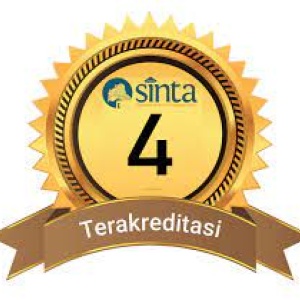Penggambaran Bentang Alam dalam Serat Rama dan Kakawin Ramayana
DOI:
https://doi.org/10.37014/jumantara.v15i1.4936Keywords:
Landscape, Serat Rama, Kakawin Ramayana, Ecocriticism, TextsAbstract
Landscapes are natural scenery or areas with various forms of the earth's surface (mountains, rice fields, valleys, rivers, and so on) which together constitute a single entity. Many depictions of landscapes are recorded in old literary works. One of the Javanese literary works that records the depiction of landscapes is Serat Rama. Serat Rama is a new Javanese literary work composed by R. Ng. Yasadipura in Surakarta which is derived from the Kakawin Ramayana in Old Javanese. Both texts tell the story of Prabu Rama's journey to rescue his wife, Dewi Sinta, who was kidnapped by Prabu Rahwana in Alengka. During his journey, Prabu Rama has passed through various landscapes accompanied by obstacles and obstacles. This paper attempts to answer the problem, namely how is the landscape depicted in Serat Rama and Kakawin Ramayana? By knowing the depiction of landscapes in old literary works, there will be a little picture for today's readers about natural conditions in the past. This paper applies a philological research method with an ecocritical approach. Data collection was done by inventorying the stanzas in Serat Rama and Kakawin Ramayana that describe landscapes to be translated, described, and compared. The depictions of landscapes in Serat Rama and Kakawin Ramayana were sorted into (1) depictions of forests, (2) depictions of mountains, and (3) depictions of waters. The results show that the depiction of landscapes in Kakawin Ramayana appears more detailed and some are still influenced by the Indian natural setting. In Serat Rama, the author tries to depict landscapes by localizing them to suit the Javanese natural setting. There are several names of landscapes that exist in Kakawin Ramayana but are not found in Serat Rama. There are also some differences in mentioning the names of landscapes that arise due to word-cutting errors and different interpretations when recomposing the kakawin.References
Acri, Andrea. “More on Birds, Ascetics and Kings in Central Java: Kakavin Ramayana, 24.111-115 and 25.19-22”. Dalam Acri, Andrea, dkk. (Ed.), From Lanka Eastwards: The Ramayana in the Literature and Visual Arts of Indonesia (53-91). Leiden: KITLV Press. 1999.
Baried, dkk. Pengantar Teori Filologi. Jakarta: Pusat Pembinaan dan Pengembangan Bahasa, Departemen Pendidikan dan Kebudayaan. 1984.
Behrend, T. E., dkk. Katalog Induk Naskah-Naskah Nusantara Jilid 1: Museum Sonobudoyo Yogyakarta. Jakarta: Djambatan. 1990.
Bentang Alam. Pada KBBI Daring. Diambil Juli 2023, dari https://kbbi.kemdikbud.go.id/entri/bentang%20alam. 2016.
Damono, Sapardi Djoko. “Transmisi Sastra: Pengantar.” Dalam Sedyawati, Edi, dkk. (Ed.), Sastra Jawa: Suatu Tinjauan Umum (411-413). Jakarta: Balai Pustaka. 2001.
Fitri, Emy Nur Issae. “Ajaran Kepemimpinan Asthabrata dalam Serat Rama Karya R. Ng. Yasadipura (Kajian Estetika Resepsi Berdasarkan Horizon Robert Jauss).” [Skripsi, Universitas Sebelas Maret Surakarta]. 2015.
Florida, Nancy K. Jawa-Islam di Masa Kolonial: Suluk, Santri, dan Pujangga Jawa. Yogyakarta: Buku Langgar. 2020.
Glotfelty, Cheryll. “Introduction”. Dalam Glotfelty, Cheryll dan Harold Fromm (Ed.), The Ecocriticism Reader: Landmarks in Literary Ecology (xv-xxxvii). Athens: University of Georgia Press. 1996.
Hutan. Pada KBBI Daring. Diambil Juli 2023, dari https://kbbi.kemdikbud.go.id/entri/hutan. 2016.
Kern, H. (ed.). Ramayana: Oudjavaansch Heldendicht. The Hague: Nijhoff. 1900.
Masruri, Bukhori (Ed.). Benantara: Bentang Alam dalam Gelombang Sejarah. Jakarta: Kepustakaan Populer Gramedia. 2021.
Molen, Willem van der. Ramayana: The Story of Rama and Sita in Old Javanese. Romanized Edition. Tokyo: Research Institute for Language and Cultures of Asia and Africa (ILCAA), Tokyo University of Foreign Studies. 2015.
Perairan. Pada KBBI Daring. Diambil Juli 2023, dari https://kbbi.kemdikbud.go.id/entri/perairan. 2016.
Poerbatjaraka, R. M. Ng. Ramayana Djawa-Kuna: Teks dan Terjemahan Sarga I—XXVI. Jakarta: Perpustakaan Nasional RI. 2010.
Poerbatjaraka, R. M. Ng. dan Tardjan Hadidjaja. Kepustakaan Djawa. Jakarta: Djambatan. 1952.
Poerwadarminta, W. J. S. Baoesastra Djawa. Batavia: J. B. Wolters’ Uitgevers Maatschappij. 1939.
Robson, Stuart. The Old Javanese Ramayana: A New English Translation with an Introduction and Notes. Tokyo: Research Institute for Language and Cultures of Asia and Africa (ILCAA), Tokyo University of Foreign Studies. 2015.
Sadewa, Tio Cahya. “Analisis Semiotis Rubrikasi Naskah Serat Rama (PB A.243/L291) Koleksi Perpustakaan Museum Sonobudoyo Yogyakarta”. [Skripsi, Universitas Gadjah Mada Yogyakarta]. 2020.
Santoso, Soewito. Indonesian Ramayana Volume 1-3. Singapore/New Delhi: Institute of Southeast Asian Studies, and International Academy of Indian Culture. 1980.
Saputro, Waridi Hendro. “Model Kepemimpinan Ideal dalam Serat Rama Jarwa”. Makalah Seminar Nasional Bahasa, Sastra Daerah, dan Pembelajarannya (SN-BSDP). Semarang: Universitas PGRI Semarang. 2018.
Serat Rama. Perpustakaan Nasional Republik Indonesia. KBG 260.
Serat Rama. Perpustakaan Nasional Republik Indonesia. KBG 269.
Tsuchiya, Kenji. Javanologi di Zaman Ranggawarsita: Pengantar Kebudayaan Jawa Abad 19. Yogyakarta: Buku Langgar. 2023.
Untoro, Ratun. “Penggambaran Alam dalam Sastra Jawa Kuno dan Jawa Modern Sebagai Promosi Wisata”. Jurnal Kadera Bahasa 9, No. 2 (2017): 107-114.
Yasadipura, R. Ng. Serat Rama (Naskah Asli Diterbitkan oleh Percetakan Tuwan G. C. T. van Dhorep en Ko di Semarang-Surabaya-Bandung pada Tahun 1923): Series dari Program Digitalisasi Sastra Daerah. Surakarta: Yayasan Sastra Lestari. 2012.
Zoetmulder, P. J. Kalangwan: Sastra Jawa Kuno Selayang Pandang. Jakarta: Djambatan. 1994.
Zoetmulder, P. J. dan S.O. Robson. Kamus Jawa Kuna-Indonesia. Jakarta: Gramedia Pustaka Utama. 1995.
Downloads
Published
Issue
Section
License
Copyright (c) 2024 Tio Cahya Sadewa

This work is licensed under a Creative Commons Attribution-ShareAlike 4.0 International License.
- This statement is the author's commitment to respect copyright, both in terms of citing other people's work and utilizing journal content. If necessary, the author can send an Authenticity Statement of Article stating that "this work is the author's original idea and has never been sent to another publisher and published in any publication"
- The author retains copyright.
- The moral rights of publication belong to the author.
- Formal legal aspects in the use of journal publications refer to the Creative Commons Attribution-ShareAlike 4.0 (CC BY-SA) license, which means that journal content can be used freely for any purpose.










